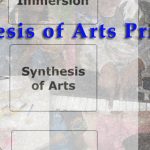Conducive Atmosphere Principle
Conducive Atmosphere Principle
The conducive atmosphere principle reinforces high-quality training within an accepting and encouraging environment, which, in turn, allows for full focus directly on activities. This principle facilitates the adaptability and stimulation needed for all students to be able to reach specific learning objectives associated with a given experiential program. Adaptability entails student-centered instruction through flexible (i.e., open to modification) teaching materials, a choice of learning tools, constant attention, and customization on the part of the educator in accordance with each student’s learning capacity. Stimulation involves individually manageable challenges for students, eliciting positive emotions and intrinsic motivation for learning by meeting students’ own goals, stimulating the body and mind (such as with exercise), and asking students to set active learning intentions in collaboration with their peers. As evidenced by myself and through students’ reports, in every IAM program conducted thus far, all students reached the programs’ specific objectives (outlined in Soyfer 2016, section IAM Programs, pp. 32-40 1.3) as a group, through each one’s own personal path of learning.
Hence the conducive atmosphere principle is facilitated through: (1) eliciting positive emotions (to enhance learning), (2) using flexible materials (i.e., modifying their presentation and structure), and (3) facilitating an optimal learning state (i.e., manageable, but slightly challenging and personally meaningful environment). For example, positive emotions may be elicited through enjoyable games or physical exercise prior to focused learning activities. As for flexible material, one example, in the case of song, is to have students at first sing a single syllable instead of lyrics (e.g., “la la”). An optimal learning state is achieved by subsequent addition of lyrics at the appropriately challenging time. Let us take a closer look at these three processes.
Read more about Conducive Atmosphere IAM Principle here.
Bibliography:
Soyfer, Nina. 2016. “Integrated Arts Pedagogy and Philosophy.” Canada: York University.
Please note this page is a direct quote form Dr. Nina Soyfer’s dissertation “Integrated Arts Pedagogy and Philosophy” defended and archived in 2016. All rights are reserved and this quotation is provided here with permission for educational purposes.
Soyfer, Nina. 2016. “Integrated Arts Pedagogy and Philosophy.” Canada: York University, pp. 11-14.
 Next Post
Next Post